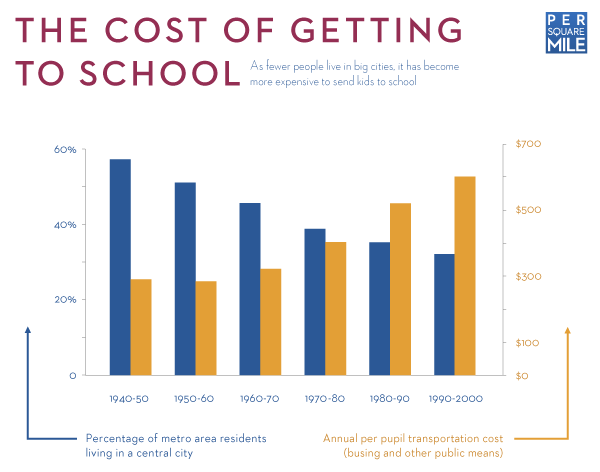The erudite Mr. Gibilisco cites a post from the mappy-snappy Per Square Mile blog. Just a few posts set my brain spinning:
- In his post on how current income inequality in the U.S. exceeds that found in the Roman Empire in 150 B.C., PSM author Tim De Chant notes that in 218 B.C., the Lex Claudia banned Senators participating in business deals. Hmm... shall we ask the same of South Dakota's legislators?
- De Chant traces the industrial revolution to a boom in literacy, which he traces to growing population density. De Chant says that growing population through the 1600s and 1700s made it easier to establish and maintain schools across England. I wonder: could there be a reverse process whereby places with less population density could see a weakening of literacy? What might that mean for the widest, emptiest stretches of South Dakota?
 De Chant notes that population sprawl increases the costs of transporting kids to school. That's one reason it costs more to educate students in our smallest rural school districts: buses in Faith and Lemmon have to put on more miles to bring fewer kids to class. Open enrollment thus inherently increases the cost of education: choice costs money, as some greater portion of the GDP goes to gasoline rather than to teacher salaries or other goods and services.
De Chant notes that population sprawl increases the costs of transporting kids to school. That's one reason it costs more to educate students in our smallest rural school districts: buses in Faith and Lemmon have to put on more miles to bring fewer kids to class. Open enrollment thus inherently increases the cost of education: choice costs money, as some greater portion of the GDP goes to gasoline rather than to teacher salaries or other goods and services.

"I wonder: could there be a reverse process whereby places with less population density could see a weakening of literacy? What might that mean for the widest, emptiest stretches of South Dakota?"
The other day on National Public Radio's "Talk of the Nation," someone expressed the belief that cities are where the future lies, in part because urban centers are more energy-efficient than rural regions, and offer greater ease of interaction among people, leading to better job and entrepreneurial opportunities.
Although the air quality in some cities may suffer as a result of urbanization, the overall pollution generated by an urban population the size of, say, Austin is less than the overall pollution generated by the same number of people spread evenly out over an area the size of the whole state of Texas.
Only the Internet stands in the way of an inexorable march into the cities, I suppose. I can interact with compositors in Bombay just as easily as I can with compositors in Boston -- more easily, maybe, because I tend to work in the wee hours of the night when Bombay bustles! My income derives from huge cities, but I don't have to live in any of them.
To get back to your question that I quoted at the outset, Cory, the widest, emptiest stretches of South Dakota may end up as the nation's landfills, toxic waste dumps, radioactive waste dumps, missile silo zones, practice bombing ranges, or (if people have somewhat more constructive minds) massive wind ranches and solar farms, maintained by a minimum of migrants.
The efficiency argument for cities and against far-flung small towns makes me nervous... because such a move could become necessary. I think Wendell Berry proposed a balance: self-sufficient smaller cities surrounded by enough agricultural land to provide for all of their needs. Each city and its surrounding communities would be deeply integrated. Can we spread some cities out into some of our emptier turf? Could we create a network of such self-sufficient mini-metros along the James River Valley?